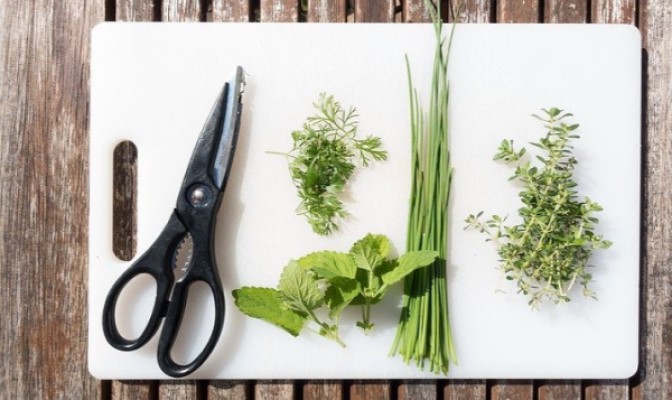
There must have been times when you have been cooking your favorite meal and have run out of herbs or have brought herbs from the market which have gone bad due to the lack of use. In such situations you often tend to wonder how to create a kitchen herb garden and use it at your disposal. Growing herbs that you frequently use inside your kitchen is simple. You just need to figure the basic requirements of herbs and get going.
- Start with choosing a bright spot in your kitchen to grow your herbs. Most herbs require at least 6-8 hours of direct sunlight for healthy growth. The amount of strong light also influences their flavor. So the best place to keep them would be the window sill or the kitchen counter adjacent to the window. If you do not have a bright sunlit area in your kitchen then using a grow light will work.
- Herbs require a warm temperature ranging from 60-70 degrees. Make sure the plant isn’t touching the window pane since extreme temperature can damage the herb. You can use window insulators for the winter season.
- Choose herbs that you like and frequently use. You can pick easy to grow herbs like mint, rosemary, thyme, chives, parsley, oregano and sage. If you’re a beginner, start with three herbs and expand the number with time. You can start by using seeds or baby plants whichever you can procure.
- Use individual planters or pots for each herb that are well drained. Accumulation of water in sealed pots can lead to root rot. Make sure to put a saucer beneath each planter or pot to avoid messing up the window sill or kitchen counter.
- The type of soil that herbs grow well in is the potting mix and not potting soil. Potting mix contains coco peat, coarse sand and perlite. Perlite is an aerator which provides additional drainage and is the ingredient missing in potting soil. Also add an organic fertilizer like seaweed for best results.
- Infrequent watering works best for herbs. Allow the soil to somewhat dry out before watering. Insert your finger one inch below the soil to find out if it’s dry. If the soil is dry, then water the plant.
- Prune your herbs once in a while to get a sturdier and greater harvest. Provide good air circulation to prevent the spread of plant diseases and to encourage free growth. Also re-arrange the pots frequently to ensure that each side get equal amount of sunlight.
- Harvest the herbs once the plant matures. You can do so but cutting off the outer younger stems with scissors. Do not remove more than 2-3 inches from each stem at one time.
Growing herbs in your kitchen not only makes them handy while you’re cooking but also gives a fresh look to your kitchen. You can use creative and stylish planters for your herbs which look beautiful in the kitchen. So the next time you wonder how to create a kitchen herb garden, just go through these points and start growing them right away.